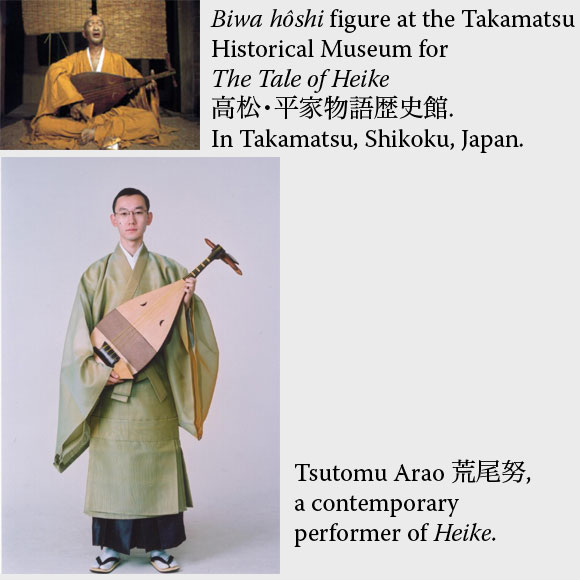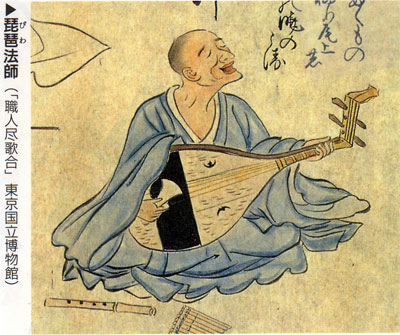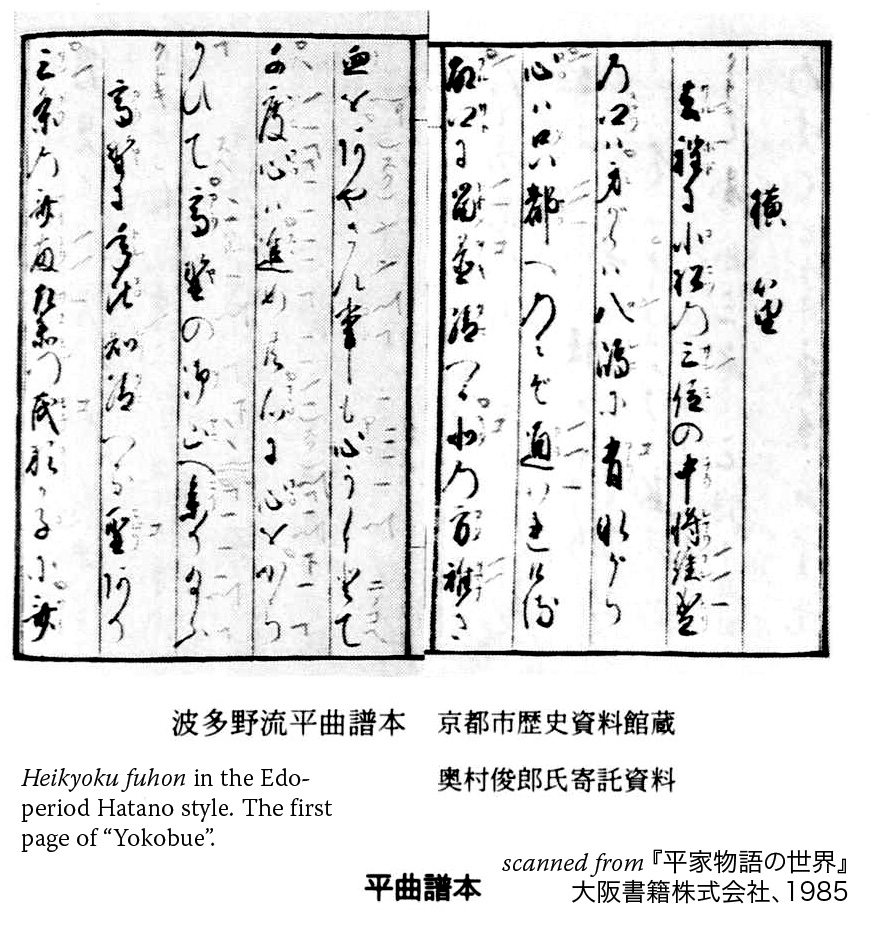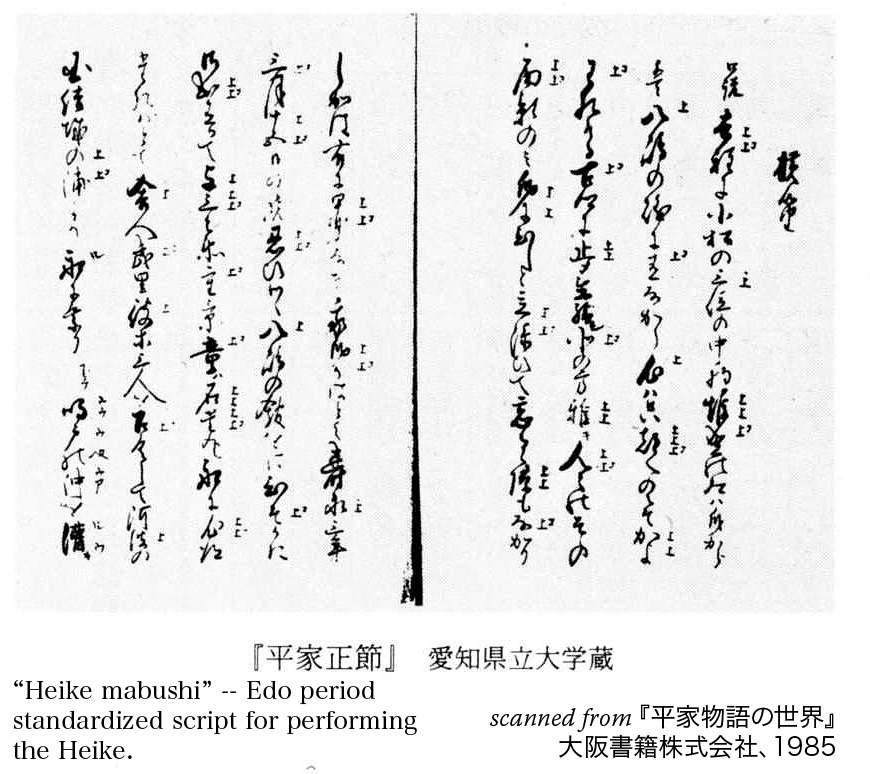
Some brief comments about the traditional performance of The Tale of Heike (Heike monogatari)
Biwa and biwa hôshi
We discussed at some length the absolutely critical impact that oral performances of The Tale of Heike had on the forms of the story as we now read it. Below is a slide from the PowerPoint presentation (modified) of the final session of the class where we took on these issues directly. Here are the associated internet links (both sites are Jse lang. only) that were part of the original slide: Takamatsu Historical Museum for The Tale of Heike; Arao's Heike Biwa and Biwa Hôshi website. An additional site regarding the biwa and performing Heike, with a limited section in English is maintained by Madoka Suzuki: Suzuki's Heike Biwa website. Another good single webpage in English discussing the biwa in some detail is by Ooijen: Comments by David van Ooijen. In class I presented some high-quality photographs of the front, back and details of the biwa used for performing. In deference to the webpage author's copyright request, they are not reproduced here. They can be found at: Suzuki's photographs of the biwa. There is a considerable amount of information on the web in English about the type of biwa used to perform the Heike and the performances themselves. Search engines find these pages easily.

Another illustration of a biwa hôshi in the midst of performing. This one is a detail from a scroll housed at the Tokyo National Museum. (While the book from which this image was taken captioned this as Shokunin tsukushi uta-awase, I believe this might actually be from a scroll at the museum titled Kinsei-Shokunin tsukushi emaki. If so, then this is the work of the Edo painter Kuwagata Keisai, 1764-1824.) Note how other musical instruments are near at hand:
 |
|
Two examples of heikyoku "score"
(The Tale of Heike marked and ammended for performing)
We also watched a short video of different styles of chanting. In that video were the scores used, including the markings in red that indicated to the performer what mode of chanting should be used, etc. Below are (unfortunately) black and white reproductions of two different types of texts of The Tale of Heike, marked for performing:


Below is a short audio excerpt from a performance of The Tale of Heike. The passage as it appears in McCullough's translation is first quoted. Then the Japanese from which the performance (a version slightly different from the one McCullough has used for translation) is made is quoted, with a running English translation (by me) next to it. The performed portion is highlighted in blue. You can hear clearly the emphasis put on the final verb of the sentence ("kanji-tari" translated as "moved").
| “The humming-bulb went into the sea; the fan flew toward the heavens. For a time, the fan fluttered in the air; then it made an abrupt descent toward the sea, tossed and buffeted by the spring wind. The red fan with its golden orb floated on the white waves in the glittering rays of the setting sun; and as it rocked there, dancing up and down, the Heike in the offing beat their gunwales and applauded, and the Genji on the land struck their quivers and shouted.” Chapter Eleven, Section [4], “Nasu no Yoichi.” The Tale of Heike, trans. by Helen C. McCullough, p. 368. | |||||
 |
|||||
| Play example:
|
|||||
| Concept courtesy of Christopher Boulton. For further information see his, "Setting the Text: Teaching Japanese Literature with Music." For the panel "Reading the Other: Teaching Literature and Culture in Translation."UC Language Consortium Conference on Language Learning and Teaching. University of California, Irvine. March 9, 2002. http://uccllt.ucdavis.edu/conf1sched.cfm |
|||||